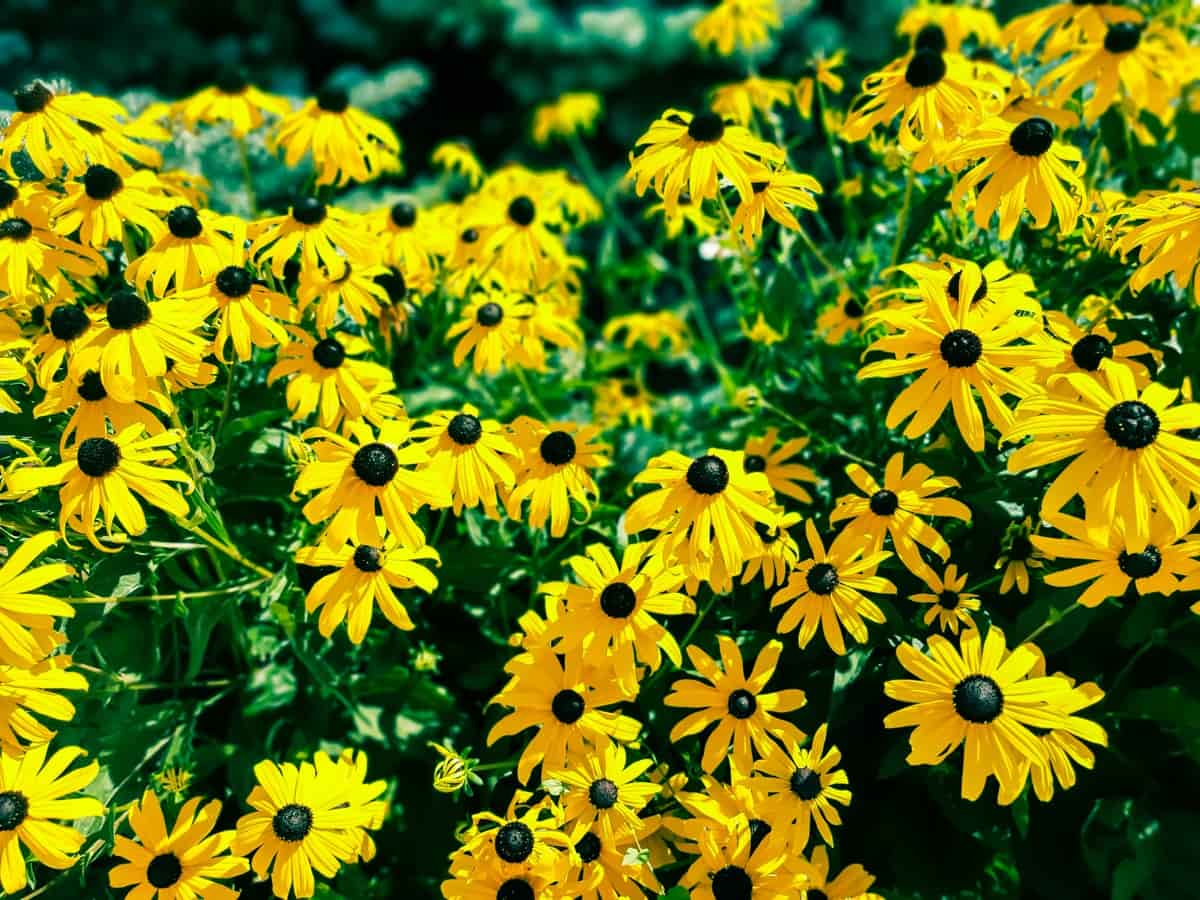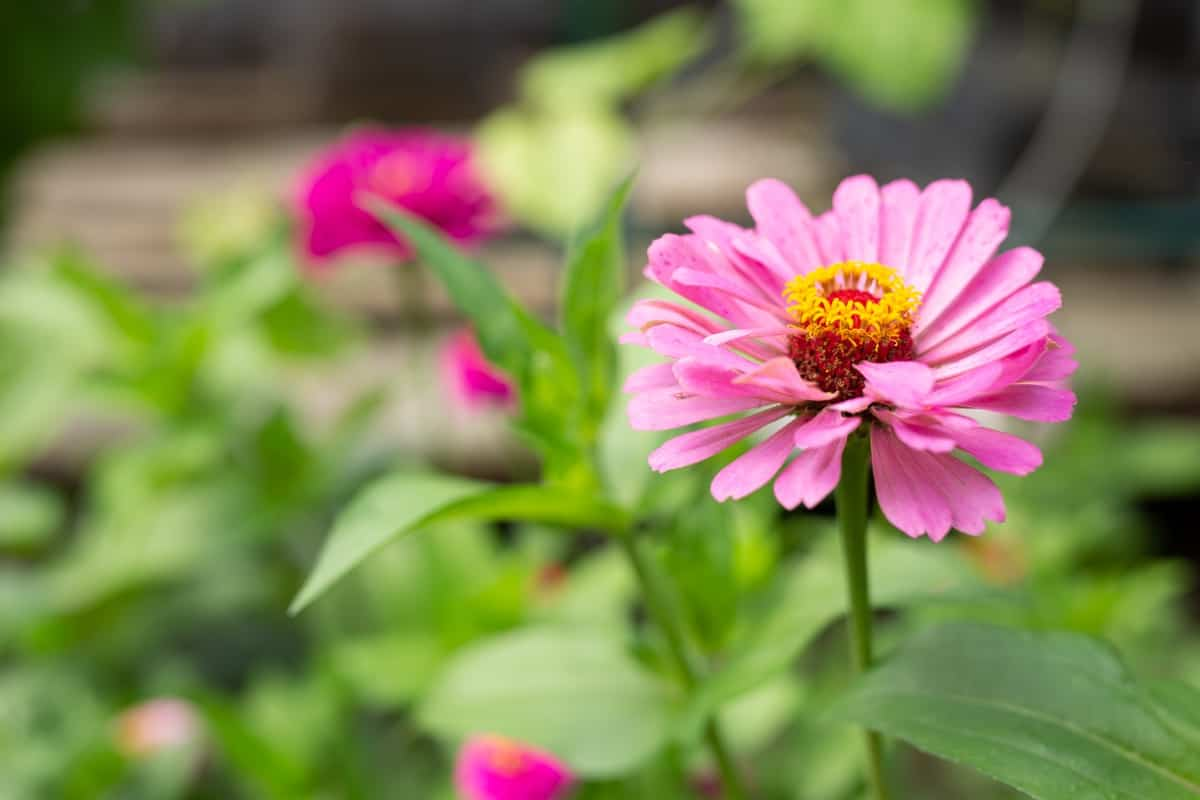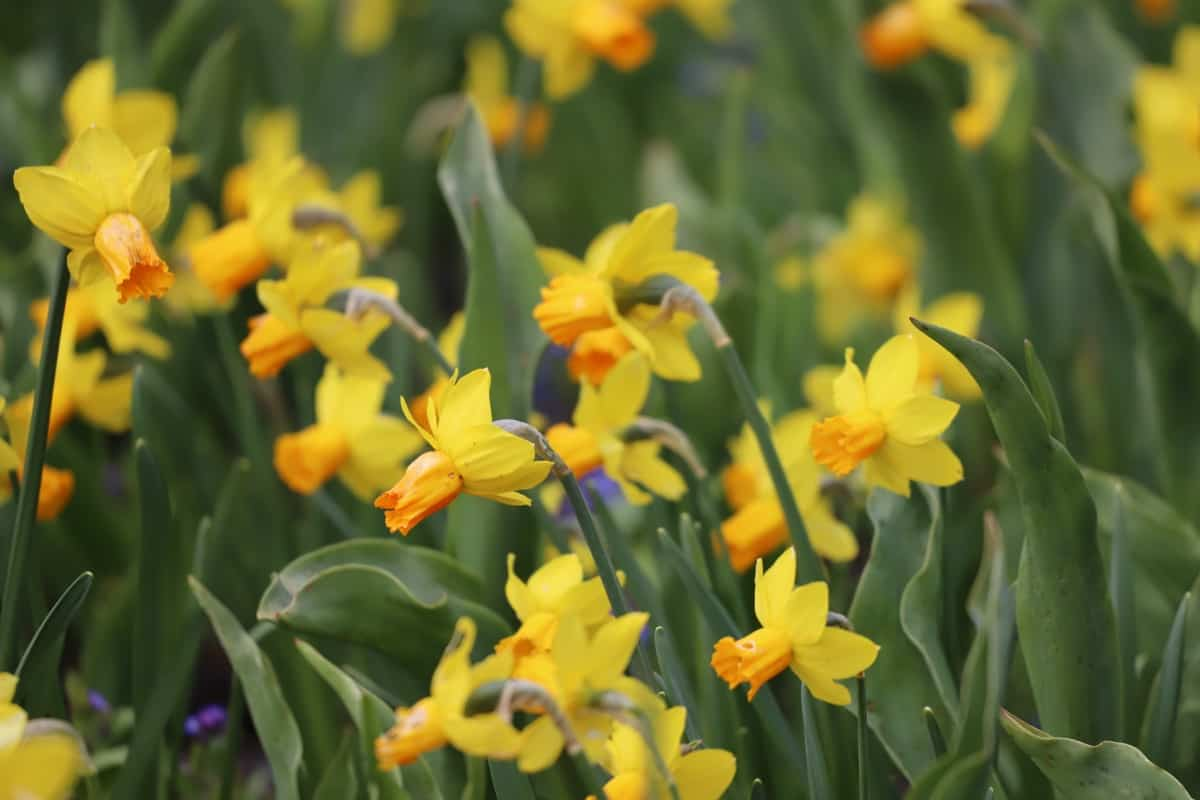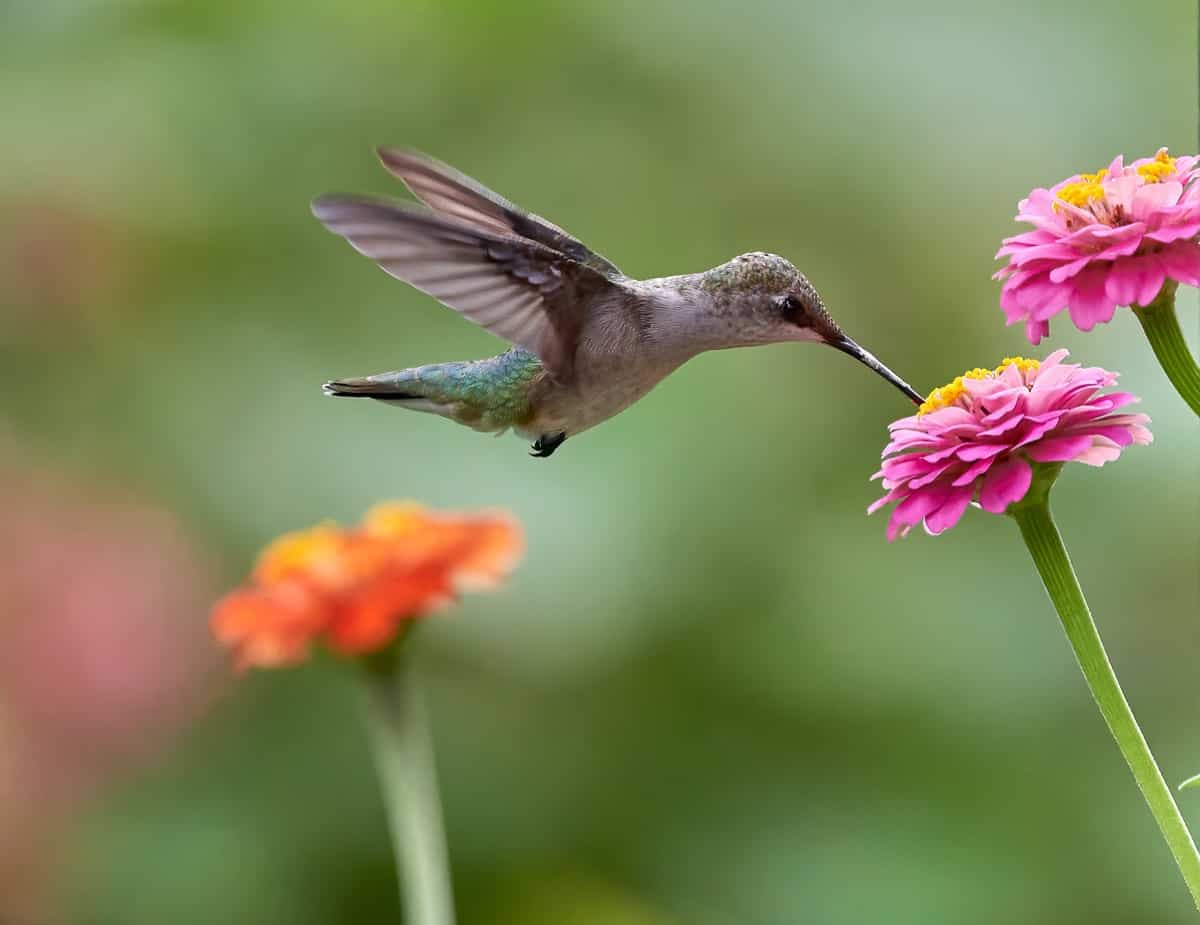Growing flowers specifically chosen to attract pollinators creates a visually stunning garden and provides a valuable food source for hardworking insects. As they feast on nectar and pollen from your blooms, they inadvertently transfer pollen from one flower to another. Whether you have a small balcony, a tiny patio, or just limited space in your garden, easy-to-grow flowers in pots are the perfect solution to add beauty to your surroundings. Plus, it’s an incredibly rewarding experience that lets you get creative with various flower combinations and arrangements.
But it’s not just about supporting the delicate balance of nature; growing flowers for pollinators can be a rewarding experience for you too. Witnessing the vibrant colors of blossoms attracting fluttering butterflies or hearing the gentle hum of bees as they collect nectar is both mesmerizing and therapeutic. Moreover, by inviting more pollinators into your garden through carefully selected flowers, you create a biodiverse environment that fosters overall ecological health.
Introduction to Easy Spring Flowers to Grow for Pollinators
Spring is crucial for pollinators, such as bees, butterflies, and hummingbirds, who rely on the nectar and pollen from flowers to survive. To help support these important creatures and add beauty to your garden, consider planting early spring flowers for bees. Pollinators transfer pollen from one flower to another while searching for food sources. Without them, many of our favorite fruits, vegetables, and flowers would not be able to thrive. You can create a welcoming habitat that supports their needs by providing abundant pollinator flowers for bees in your garden or outdoor space.
Importance of Pollinators in the Ecosystem
Pollinators play a key role in the ecosystem, ensuring the survival and reproduction of many plant species. These hardworking creatures, including bees, butterflies, and birds, transfer pollen from one flower to another as they move from plant to plant in search of nectar or pollen.
Without pollinators, these plants would not produce the fruits and seeds necessary for reproduction. Not only do pollinators contribute to food production for humans and other animals, but they also help maintain biodiversity by facilitating cross-pollination among different plant species. This promotes genetic diversity within populations and helps plants adapt to changing environmental conditions.
Factors to Consider When Choosing Spring Flowers for Pollinators
When it comes to choosing spring flowers for pollinators, there are several factors that you should consider. First and foremost, think about the amount of sunlight your garden receives. Some flowers thrive in full sun, while others prefer shade. Next, consider the water requirements of different plants. If you live in an area prone to drought or have limited access to water, look for drought-tolerant varieties that can withstand dry conditions. Another important factor is whether the flowers are native to your region.
Native plants adjust to the local climate, making them more attractive to pollinators. Best Perennial flowers for pollinators are a great choice if you want long-lasting blooms year after year. They need less maintenance than annuals and provide a reliable pollinator food source. If you’re looking for low-maintenance options, choose Early spring pollinator plants that don’t need frequent deadheading or pruning. This will save you time and effort while attracting many bees and butterflies.
Sun-loving Spring Flowers for Pollinators
When choosing sun-loving spring flowers for pollinators, there are a few factors to consider. You’ll want to ensure your select flowers thrive in full sunlight. Some popular options include Coneflowers, Black-Eyed Susans, Zinnias, and Marigolds. These hardy plants can withstand the sun’s heat while still producing an abundance of colorful blossoms.
In case you missed it: How to Grow and Care for Black-eyed Susan in Your Garden: A Beginners Guide

Additionally, choosing varieties with a long blooming period is important. This ensures a steady food source for pollinators throughout the spring months. Look for perennial varieties like Salvia or Daylilies that will come back year after year with minimal maintenance. Another consideration is selecting native species whenever possible. Native plants have evolved alongside local pollinators and are often better adapted to their needs.
Shade-tolerant Spring Flowers for Pollinators
Plenty of beautiful spring flowers thrive in the shade, attracting essential pollinators like bees and butterflies. One such flower is the Bleeding Heart. Its delicate heart-shaped blooms dangle from arching stems, adding an elegant touch to any shady corner. Another great option is the Columbine, with its unique spurred petals in various colors.
In case you missed it: Blooming Bliss: Best Container Plants for Pollinators

For a burst of color, consider planting some Lungwort. This early bloomer boasts vibrant pink or blue flowers and attracts bees and hummingbirds. If you’re looking for something taller, try the Foxglove– its towering spires covered in bell-shaped blossoms will surely catch your eye.
Drought-tolerant Spring Flowers for Pollinators
When it comes to gardening, one of the biggest challenges is finding plants that can withstand dry conditions. There are plenty of beautiful spring flowers that are not only drought-tolerant but also attract pollinators to your garden. One such flower is the California poppy. With its vibrant orange petals and delicate foliage, this native wildflower thrives in hot and arid climates. Bees and butterflies can’t resist its nectar-rich blooms.
Another excellent choice for a water-wise garden is the Black-Eyed Susan. With its cheerful yellow petals surrounding a dark center, this perennial flower provides a feast for bees and other beneficial insects. Plus, it’s incredibly easy to grow from seed. If you want an elegant addition to your drought-resistant garden, consider planting Lavender. Not only does this aromatic herb produce stunning purple flowers, but it also attracts bees and butterflies with its sweet scent.
Native Spring Flowers for Pollinators
When attracting pollinators to your garden, native spring flowers are a fantastic choice. These plants have evolved alongside local pollinators, perfectly adapting them to provide the food and habitat these important creatures need. Native spring flowers come in various shapes, sizes, and colors, ensuring there is something for every garden. From the delicate blooms of Trilliums and Bloodroot to the vibrant petals of Blazing Stars and Wild Columbines, these flowers add beauty and functionality to your outdoor space.
In case you missed it: Cool-season Plants for Pollinators: Vegetables, Flowers, Fruits, Shrubs, and Herbs

One key advantage of choosing native spring flowers is their ability to thrive in the local climate and soil conditions. They are often more resilient than non-native species, requiring less water or fertilizer once established. By planting native spring flowers in your garden, you are helping support local ecosystems by providing crucial resources for bees, butterflies, hummingbirds, and other pollinators. Watching these fascinating creatures’ flit from flower to flower adds extra joy to any outdoor space.
Perennial Spring Flowers for Pollinators
Perennial spring flowers are a great addition to any garden, as they come back year after year, providing a consistent source of nectar and pollen for pollinators. These hardy plants require less maintenance than annuals, making them the best choice for busy gardeners. One popular perennial flower that attracts pollinators is the Bee Balm. It’s a favorite among bees and butterflies with its vibrant red, pink, and purple blooms. Another option is the Coneflower, which not only adds beauty with its colorful petals but also provides nourishment for bees and hummingbirds.
The Cardinal flower is an ideal choice for those looking to attract hummingbirds. Its bright red tubular flowers are irresistible to these tiny birds who rely on nectar for energy during their long migrations. If you want to create a butterfly-friendly oasis in your garden, consider planting Milkweed. This native plant serves as both a host plant for monarch butterflies’ caterpillars and a nectar source for adult butterflies.
Annual Spring Flowers for Pollinators
Annual spring flowers are a perfect choice when adding a burst of color and attracting pollinators to your garden. These vibrant blooms provide nectar and pollen for bees, butterflies, and hummingbirds, adding beauty to any outdoor space. One popular annual flower that is loved by pollinators is the Zinnia. With their bright colors, Zinnias will catch the attention of bees and butterflies. Another great option is the Marigold, which attracts pollinators and helps deter pests with its strong scent.
In case you missed it: How to Grow Zinnias from Seed: A Guide to Planting to Harvesting for Beginners

For those looking for a low-maintenance option, Sunflowers are a fantastic choice. These cheerful flowers require little care and can reach impressive heights while providing ample food for pollinators. If you aim to attract hummingbirds specifically, consider planting Petunias or Fuchsia. These delicate flowers have tubular shapes, making them irresistible to these tiny birds. Annual spring flowers offer a wide range of options for attracting pollinators and creating stunning displays in your garden.
Low-maintenance Spring Flowers for Pollinators
Low-maintenance spring flowers are the perfect choice for busy gardeners who still want to create a pollinator-friendly garden. These flowers require minimal care and attention, allowing you to enjoy their beauty without feeling overwhelmed by gardening tasks. One low-maintenance option is the Coneflower, which comes in various vibrant colors and attracts bees, butterflies, and hummingbirds. Another easy-to-grow flower is the Black-Eyed Susan. This cheerful yellow bloom blooms from late spring through summer, attracting bees and butterflies with its nectar-rich blossoms.
If you’re looking for a ground cover that requires little maintenance while providing food sources for pollinators, consider planting Creeping Thyme or Sedum. These plants have beautiful foliage and produce tiny flowers that attract other beneficial insects. For those seeking an unconventional option, try growing Yarrow. It’s a hardy perennial that comes in various colors and forms dense clusters of small flowers. Yarrow is known to attract butterflies while being drought-tolerant.
Fragrant Spring Flowers for Pollinators
Spring is when nature wakes up and fills the air with its delightful scents. Fragrant spring flowers bring joy to our senses and attract pollinators like bees and butterflies. One fragrant flower that pollinators adore is the Lavender. Its sweet aroma can be enjoyed indoors and outdoors, making it a popular choice for gardens and bouquets. Another fragrant option is Jasmine, which releases its intoxicating scent in the evening, attracting moths and bees.
In case you missed it: How to Grow and Care for Daffodils in Containers

For those who prefer a more subtle fragrance, Daffodils are a great choice. Their delicate scent adds an enchanting touch to any garden while still attracting pollinators. Lilacs are another favorite among humans and pollinators with their strong yet pleasant fragrance. When choosing fragrant spring flowers for your garden, consider planting varieties like Honeysuckle or Roses that emit alluring scents throughout the season. Additionally, herbs such as Mint or Thyme provide aromatic pleasure and serve as valuable nectar sources for visiting insects.
Colorful Spring Flowers for Pollinators
By choosing a variety of hues in your garden, you can create a visually stunning landscape while nourishing bees, butterflies, and other pollinators. The Cosmos flower is one option for adding color to your garden. With its daisy-like blooms in shades of pink, purple, and white, the Cosmos is beautiful and easy to grow.
Another colorful choice is the Zinnia. Zinnias come in various colors, including reds, oranges, yellows, pinks, and purples. They are known for their long-lasting blooms and ability to attract bees and butterflies. Consider planting Bachelor’s Buttons or Cornflowers for those looking for something more unique. These charming flowers feature delicate petals in shades of blue or pink with contrasting centers. They add a touch of whimsy to any garden while attracting pollinators like bees.
Attracting Butterflies with Spring Flowers
Spring is a magical time when vibrant flowers bloom, and butterflies gracefully flutter. If you want to create a butterfly garden, planting the right spring flowers is key. Some popular choices include Marigolds, Zinnias, and Sunflowers. These cheerful blooms will add beauty to your garden and entice butterflies with their irresistible appeal.
Another factor to consider when attracting butterflies is the shape of the flower. Look for blossoms with flat or shallow centers that provide an easily accessible landing pad for these delicate creatures. Coneflowers and Black-Eyed Susans fit this bill perfectly. You’ll keep enticing butterflies as they migrate through your area. Adding host plants is another great strategy for attracting more butterflies. Host plants are specific species that caterpillars feed on before transforming into beautiful butterflies.
Attracting Hummingbirds with Spring Flowers
Hummingbirds are fascinating creatures known for their vibrant colors and incredible ability to hover mid-air. Planting the right spring flowers is a great strategy to attract these delightful birds to your garden. Hummingbirds are attracted to brightly colored flowers, especially those that produce nectar. Some popular choices include Trumpet Vine, Bee Balm, and Coral Honeysuckle. These flowers have tubular shapes allowing hummingbirds to access their sweet nectar easily.
The bloom time is another important factor when choosing spring Flowers to attract pollinators to gardens. Select varieties that will flower during the peak of hummingbird migration, typically in early spring or late summer. This ensures a plentiful supply of food for these tiny visitors. Additionally, consider incorporating a variety of flower heights into your garden design. Hummingbirds prefer tall plants such as Cardinal Flowers and Columbine because they offer perching spots for these agile fliers.
In case you missed it: Top 17 Gorgeous Plants to Attract Hummingbirds to Your Yard

To create an inviting environment for hummingbirds, providing them with more than just food sources is crucial. Planting shrubs or small trees near your flowering plants can give them shelter and protection from predators. Remember, attracting hummingbirds requires patience and persistence. It may take some time before they discover your garden as a reliable food source. But once they do, be prepared for enchanting displays of aerial acrobatics.
Conclusion
Planting easy spring flowers for pollinators can create a beautiful and vibrant garden while providing much-needed food and habitat for these important creatures. When choosing spring flowers for pollinators, consider sun exposure, shade tolerance, drought resistance, native species, perennial or annual nature, low maintenance requirements, fragrance, and colorful blooms. Incorporating easy-to-grow spring flowers into your garden or outdoor space can positively impact pollinators’ lives. Together let’s create an environment that supports their survival and contributes to the overall health of our planet.
- How to Grow Tomatoes Organically at Home: A Comprehensive Guide
- Organic Gardening on a Budget: Low-Cost Methods and Materials
- Gongura Seed Germination and Planting Methods
- Cabbage Seed Germination and Selection
- Broccoli Seed Germination and Selection
- Asparagus Seed Germination and Variety Selection
- Seasonal Flower Gardening: Best Practices for Spring, Summer, Fall, and Winter
- How to Grow Hibiscus from Flower
- Plantation Ideas for Home Decoration: A Beginners Guide
- Flower Garden Designs and Layouts for Beginners
- Planting and Spacing Techniques in Papaya: A Beginner’s Guide
- Growing Gold: Essential Techniques for Planting Pineapples
- How to Make Kalanchoe Plant Bushy: Home Remedies and Solutions
- 11 Reasons Why Your Gardenia is Not Blooming: Home Remedies and Solutions
- Eco Elegance: The Guide to Designing a Drought-Tolerant Landscape
- Gardening on a Slope: Strategies for Hillside Landscaping
- Nourish and Flourish: Top Organic Mulches for Thriving House Plants
- Everything You Want to Know about Indian Mogra Flower: Discover Uses and Growing
- Green Thumb Success: Expert Tips for Cultivating Greenhouse Pumpkins All Year Round
- Maximize Growth & Flavor: The Ultimate Guide to Companion Planting in Herb Gardens
- How to Control Rhododendron Problems Naturally: Home Remedies and Organic Ways to Fix Them
- Natural Magic: The Remarkable Benefits of Cinnamon for Plants
- Best Steps to Revive Dying Tulip with Natural and Organic Treatment
- 10 Reasons Why Your Angel Trumpet is Not Blooming: Remedies and Treatment
- How to Fix Periwinkle Leaf and Flower-Related Problems: Natural Remedies and Solutions
- How to Fix Zinnias Leaf and Flower Problems: Discover Natural and Home Remedies
- Organic Steps to Induce Lemon Tree Flowers: A Comprehensive Guide
- Bloom Booster: Crafting the Perfect Homemade Bougainvillea Fertilizer
- Optimizing Growth: A Guide to Applying NPK Fertilizer for Potted Plants
- 10 Best Homemade Fertilizers for Rubber Plant: DIY Recipes and Application Method
- How to Boost Female Pumpkin Flowers: Effective Steps for More Flowers and High Yields
- Transform Your Indoor Garden: Top Benefits of Pink Salt for Houseplants
- 10 Best Homemade Fertilizers for Peacock Plants (Calathea): Easy DIY Guide
- Unlock Blooms: 9 Reasons Why Your Potted Chrysanthemum is Not Blooming
- 8 Reasons Why Your Potted Hibiscus is Not Blooming: Fix it with Simple Solutions
- Unlock Blooms: 9 Key Reasons Your Potted Frangipani Won’t Flower